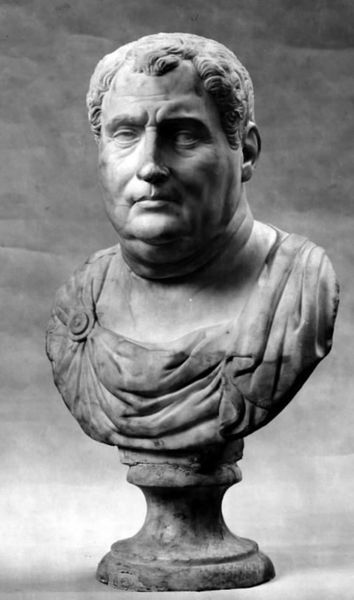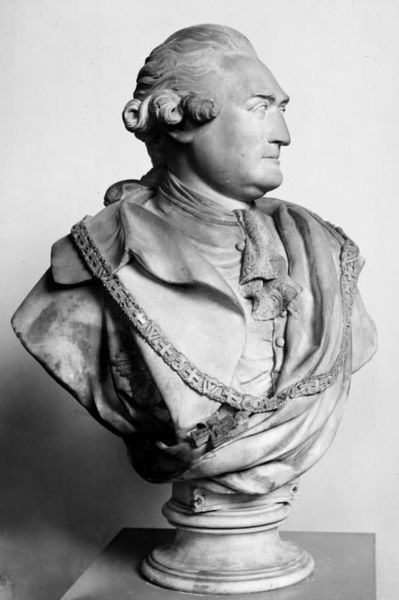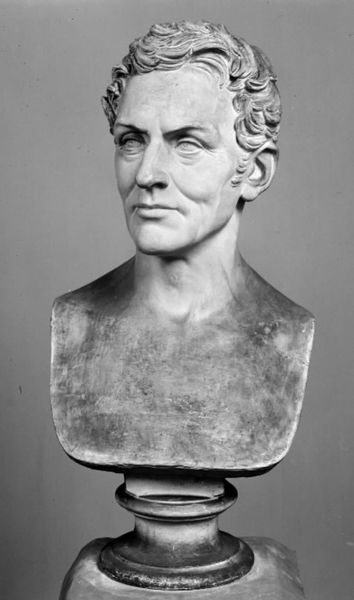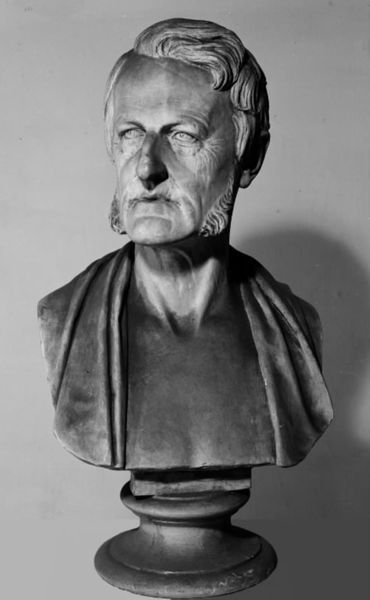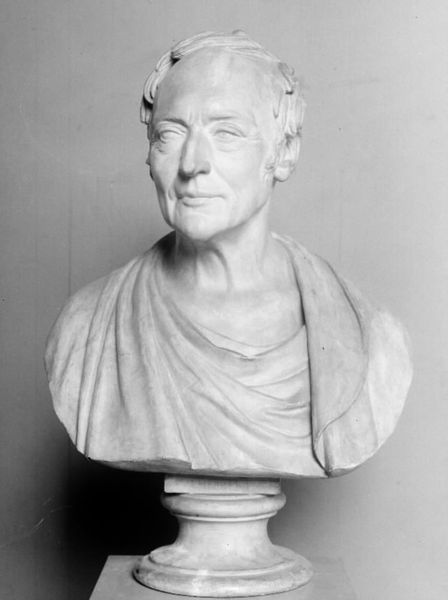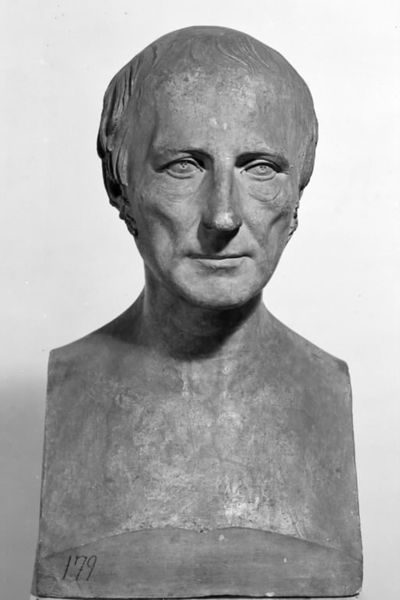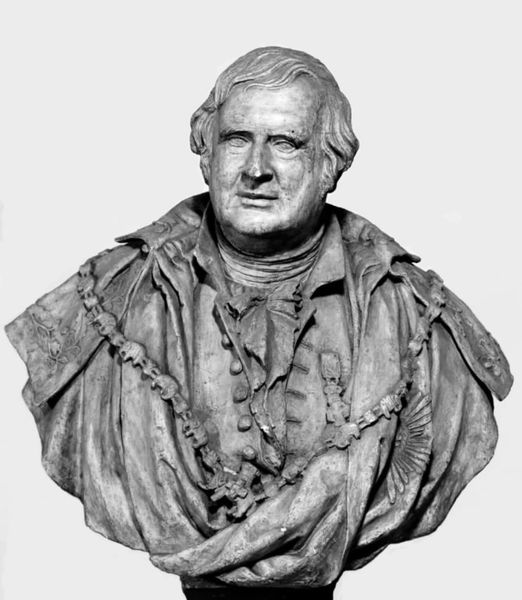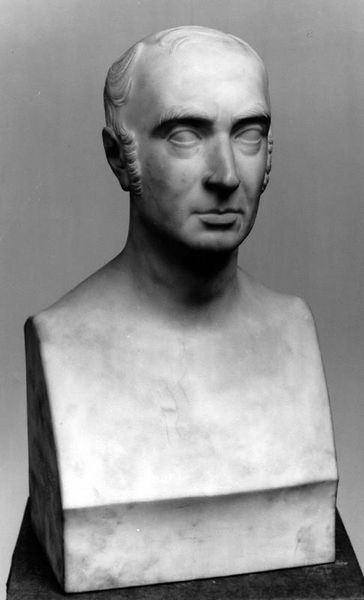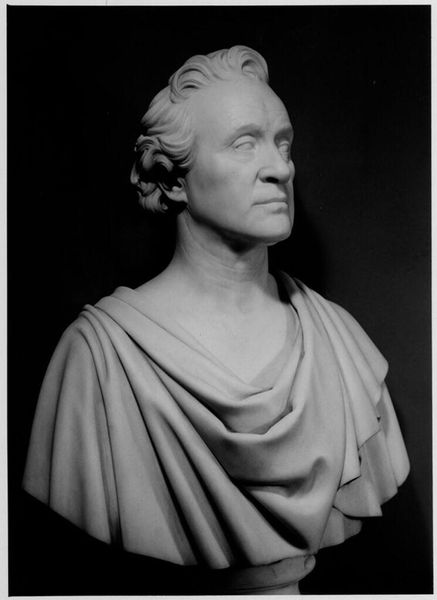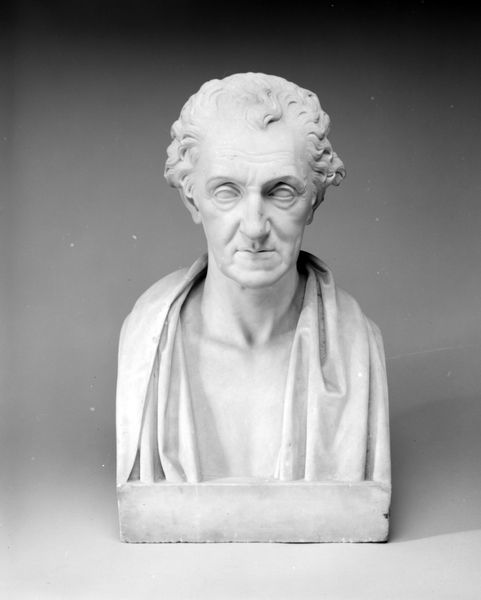
sculpture, marble
#
portrait
#
neoclacissism
#
portrait
#
sculpture
#
sculpture
#
history-painting
#
marble
#
realism
#
statue
Dimensions: 71.3 cm (height) (Netto)
Curator: There's a certain gravity about this bust, wouldn’t you say? It feels…stately, in a bygone way. Editor: Absolutely. Here we have H.W. Bissen’s marble bust of Grev A.W. Moltke-Bregentved, completed in 1855. It’s a fine example of neoclassical portraiture, fitting neatly within a moment of renewed interest in the classical past. Curator: Neoclassical, yes, but something feels so wonderfully human in his rendering. Look at the gentle curve of the mouth, or the slight crinkling by the eyes – it whispers stories of laughter and life, doesn't it? Editor: Indeed. Yet, this “humanness” exists within carefully constructed parameters. Consider the drapery – its purpose is to classicize the figure. The sculpture gestures towards democratic ideals, a kind of Roman nobility…although it’s simultaneously asserting the status of the sitter. This was a man of immense privilege. Curator: Perhaps. Still, the handling of the marble gives me chills! Bissen really knew his way around that material. He coaxed something undeniably soulful from stone. Do you think that accessing a more individual sensibility makes it realism, too? Editor: Interesting question. While elements of realism are present – evident in the individualization of features – the intent adheres to neoclassical ideals, I think. It’s worth thinking about who was deemed worthy of this level of artistry and preservation at the time. Sculpture in marble declared power; access to immortality in a world far from equitable. Curator: Ah, the power dynamics within portraiture – a juicy topic! It makes you consider the layers of meaning in capturing and representing a person, then and now. The act of looking, of interpreting…it all gets so deliciously complicated. Editor: Exactly. Even the cool, smooth marble carries historical weight. Its very materiality speaks volumes about empire, extraction, and enduring legacy. But beyond that, the bust prompts us to consider the role art plays in immortalizing particular narratives while obscuring others. Curator: It certainly stirs a great many thoughts. Looking at his image, carved from a piece of stone, almost two centuries later... the questions keep echoing in the gallery! Editor: Yes, questions that urge us to critically examine not just the artistry, but also the societal structures that frame the artwork.
Comments
No comments
Be the first to comment and join the conversation on the ultimate creative platform.
